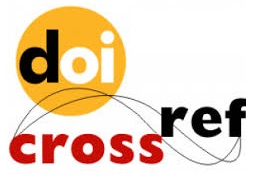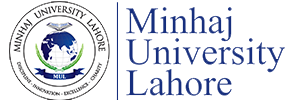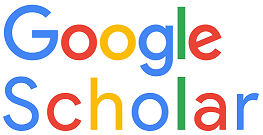Impact of Blended Learning Teaching Technique on Students Academic Achievements’ at Elementary Level
DOI:
https://doi.org/10.58932/MULI0005Keywords:
Blended Learning (BL), Information Communication Technology, Elementary level, Teaching Techniques, Bloom's taxonomy, Traditional teaching methodsAbstract
The increasing demands on teachers have led to the strategic integration of information communication technology, suggesting that teachers' effectiveness can be heightened through the judicious incorporation of technology into their teaching techniques. In light of this premise, this research aimed to assess the impact of blending learning teaching techniques on the academic achievement of 8th class science subject students in district Gujranwala, Pakistan. The main objective was to compare students’ achievement levels between blending learning and traditional methods. A pre-test post-test control group design was utilized, with a sample of sixty students who were randomly selected. Data were collected through achievement test, revealing blending learnings' superiority in enhancing students' cognitive skills according to Bloom's taxonomy. Results revealed the potential benefits of incorporating blending learning in development of education at the elementary level.
References
Asif, M., Edirisingha, P., Ali, R., & Shehzad, S. (2020). Teachers' Practices in Blended Learning Environment: Perception of Students at Secondary Education Level. Journal of Education and Educational Development, 7(2), 286-306.
Barbour, M., Brown, R., Waters, L., Hoey, R., Hunt, J., Kennedy, K., . . . Trimm, T. (2011). Online and blended learning: A survey of policy and practice from K-12 schools around the world. International Association for K-12 Online Learning. In ERIC.
Bersin, J. (2004). The blended learning book: Best practices, proven methodologies, and lessons learned. Pfeiffer.
Doom, C. A. (2016). Teacher and Technology - Blended Learning: How Important is the Teacher in this Equation? : The University of Nebraska-Lincoln.
Dwyer, B. (2016). Engaging all students in internet research and inquiry. The Reading Teacher, 69(4), 383-389.
Gomes, M. (2014). Blended learning: A student-centered approach. Journal of Educational Development, 35(2), 12–18.
Anjum, G., & Bhatti, M. A. A. Discover the Impact of Internet Usage on the Academic Performance of Library and Information Science Students. Indonesian Journal of Multidiciplinary Research, 4(2), 377-388.
Graham, C. R., Woodfield, W., & Harrison, J. B. (2013). A framework for institutional adoption and implementation of blended learning in higher education. The Internet and Higher Education, 18(3), 4-14.
Hill, M. J. (2015). Scientific representational fluency: Defining, diagnosing, and developing. Springer.
Hudson, H. (2013). How to implement a station rotation model in blended learning. In: Internet].
Hui, M. (2016). A teacher developed blended learning model on blending reading comprehension skills to support across. University of Navarra.
Kaleta, R., Skibba, K., & Joosten, T. (2007). Discovering, designing, and delivering hybrid courses. Online Learning, 11(1), 51–62.
Kundi, G. M., Nawaz, A., & Khan, S. (2010). The predictors of success for e-learning in higher education institutions (HEIs) in NWFP, Pakistan. JISTEM-Journal of Information Systems and Technology Management, 7(2), 545-578.
McAlister, S. E. (2013). Open enrollment in advanced placement courses: Experiences of traditional and non-traditional students. Loyola University Chicago.
McCue, T. J. (2014). Blended learning: Engaging teachers and students with relevant content. Journal of Educational Technology, 30(3), 45–52.
Means, B., Toyama, Y., Murphy, R., & Baki, M. (2013). The effectiveness of online and blended learning: A meta-analysis of the empirical literature. Teachers College Record, 115(3), 1-47.
Moore, J. L., Dickson-Deane, C., & Galyen, K. (2011). e-Learning, online learning, and distance learning environments: Are they the same? The Internet and Higher Education, 14(2), 129-135.
Oliver, K., & Stallings, D. (2014). Preparing teachers for emerging blended learning environments. Journal of Technology and Teacher Education, 22(1), 57-81.
Ololube, N. P. (2015). Handbook of research on enhancing teacher education with advanced instructional technologies: IGI Global.
Picciano, A. (2014). A critical reflection of the current research in online and blended learning. Elm Magazine, 4(1), 119-132.
Poon, J. (2013). Blended learning: An institutional approach for enhancing students' learning experiences. Journal of Online Learning and Teaching, 9(2), 271-296.
Rahman, A. (2007). Higher education in Pakistan: A silent revolution. Daily Dawn.
Rafaqat, M. ., Azad, F. ., Ahmad, S. ., Aijaz, K. ., Ikram, S. H. ., Bashir, U. ., Bhatti, M. A. A. ., & Saeed, S. . (2024). Impact of Governance and Strategy Performance on Employer Branding. Research Journal for Societal Issues, 6(2), 852–867.
Shahid, D. W. (2021). Andragogic quality through creation of e-contents. Pakistan Journal of Educational Research and Evaluation (PJERE), 2(1), 73-89.
Staker, H., & Horn, M. B. (2012). Classifying K-12 blended learning. Innosight Institute.








